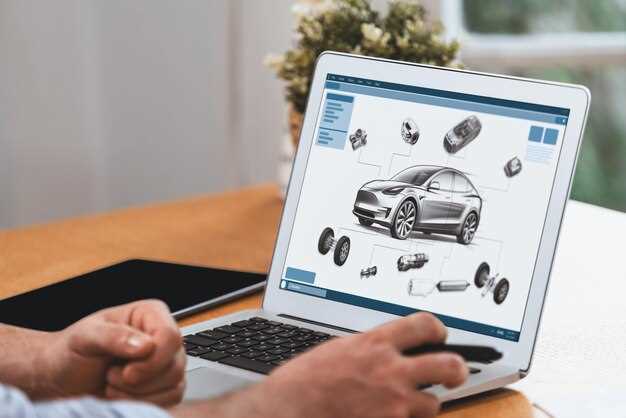
In recent years, the world of investments has expanded beyond traditional assets such as stocks and bonds. One fascinating category that has gained significant traction is collectible vehicles, a niche market that combines passion with the potential for remarkable returns. From classic cars to rare motorcycles, the allure of collectibles lies not only in their intrinsic value but also in the emotional connection they evoke among enthusiasts and collectors alike.
The concept of investing in collectibles is not new; however, the increasing interest in alternative investments has brought collectible vehicles to the forefront. Investors are discovering that these prized possessions can serve as a hedge against inflation and market volatility, while also providing personal enjoyment. This unique intersection of class and culture makes the collectible vehicle market an intriguing option for those looking to diversify their portfolios.
To effectively capitalize on this burgeoning market, it is crucial for investors to understand both the current trends and the underlying factors that contribute to the value of these assets. Factors such as rarity, provenance, and condition play significant roles in determining the worth of collectible vehicles, transforming mere passion projects into viable investment strategies. By blending enthusiasm with a strategic approach, investors can navigate this exciting landscape and discover the potential benefits of incorporating collectible vehicles into their investment strategies.
Evaluating the Market Value of Classic Cars as an Investment
Investing in classic cars has gained popularity as a viable alternative to traditional assets. The market value of these collectibles is influenced by various factors, making evaluation crucial for potential investors. Understanding these factors can help gauge the investment potential of classic vehicles.
Authenticity and Rarity play a significant role in determining a classic car’s market value. Vehicles that retain their original parts and documentation tend to command higher prices. Additionally, limited production models or those with unique features are often more sought after, thus enhancing their investment appeal.
Condition and Restoration are critical aspects as well. A car in pristine condition or one that has undergone professional restoration usually fetches a premium. Investors should familiarize themselves with grading systems, such as the one established by the Classic Car Club of America, to accurately assess the condition of a vehicle.
Market Trends should also be closely monitored. The classic car market can experience fluctuations based on economic conditions, collector interests, and trends within the automotive industry. Consulting sales data from auctions, private sales, and online marketplaces can provide insight into current demand and pricing patterns.
Historical Significance contributes to the valuation of classic cars as collectibles. Vehicles with notable racing history, celebrity ownership, or those representing specific eras may hold a particular allure for collectors. This historical context can significantly enhance a car’s desirability and market value.
Investors should also consider provenance, as a well-documented history can increase a classic car’s worth. Keeping detailed records and having verification from known organizations or experts can greatly enhance the asset’s credibility and marketability.
Ultimately, evaluating the market value of classic cars as an investment requires a comprehensive approach, involving research, analysis of trends, and careful consideration of various influencing factors. By doing so, investors can make informed decisions and potentially reap substantial rewards from their collectible vehicle investments.
Understanding the Risks and Rewards of Collectible Vehicle Ownership

Owning collectible vehicles can be a fascinating and potentially lucrative investment strategy. However, it is essential to recognize both the risks and rewards associated with this unique asset class. Collectibles, including classic cars, vintage motorcycles, and rare vehicles, can appreciate significantly over time, providing owners with substantial financial returns. These vehicles often embody rich histories and cultural significance, enhancing their appeal to collectors and investors alike.
One of the primary rewards of collectible vehicle ownership is the potential for value appreciation. The rarity and condition of a vehicle can greatly influence its market value, often leading to substantial capital gains. Additionally, as interest in vintage automobiles continues to grow, demand frequently drives prices higher, further increasing the potential for profit. Collectible vehicles can also provide a sense of personal satisfaction and joy, as owners take pleasure in the aesthetic and historical attributes of their cars.
However, investing in collectibles is not without its risks. The market for collectible vehicles can be volatile, and values can fluctuate based on factors such as economic conditions, trends, and the availability of similar assets. The cost of ownership can also be significant, including insurance, maintenance, and storage expenses, which can erode potential profits. Furthermore, the need for expertise in evaluating vehicles can be a barrier to entry, as determining authenticity and condition is crucial in safeguarding against overspending on a less valuable item.
In conclusion, collectible vehicles offer both opportunities and challenges for investors. While the potential for substantial returns exists, understanding the dynamics of this unique asset class and actively managing associated risks is vital for successful ownership. Careful research and a passion for the collectibles can enhance the investment experience, making it not only financially rewarding but also personally fulfilling.
Strategies for Building a Diverse Portfolio of Collectible Vehicles

Building a diverse portfolio of collectible vehicles requires careful consideration of various asset classes within the automotive realm. Collectibles can include classic cars, vintage motorcycles, or rare automotive memorabilia, each offering unique investment opportunities. The first strategy is to conduct thorough research to determine which vehicles have historically appreciated in value. Understanding market trends and historical performance can provide insights into potential future assets.
Another important approach is to diversify between different categories of vehicles. For instance, investing in both classic muscle cars and luxury vintage automobiles can mitigate risks associated with market fluctuations in a specific segment. Each category often behaves differently under economic conditions, allowing for a more balanced portfolio.
Additionally, consider diversifying across various price points. While high-value collectibles can yield significant returns, they often come with higher risks. Allocating a portion of your budget to moderately priced vehicles can offer a safety net while still allowing for considerable growth potential. Emerging collectibles, such as electric vehicles with vintage appeal, should not be overlooked as they present new investment avenues.
Networking within the collector community can also prove beneficial. Engaging with enthusiasts, attending auctions, and participating in exhibitions can provide valuable insights into which collectibles are gaining popularity. Building relationships with experts and fellow collectors may lead to early investment opportunities in trending vehicles.
Finally, maintaining a long-term perspective is crucial. The market for collectibles can be unpredictable, and it’s often necessary to hold onto assets for an extended period to realize significant appreciation. By adopting a patient investment strategy, collectors can enhance their chances of building a robust and diverse portfolio that stands the test of time.
